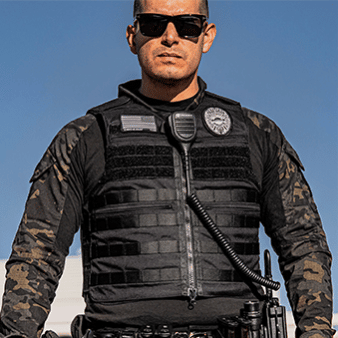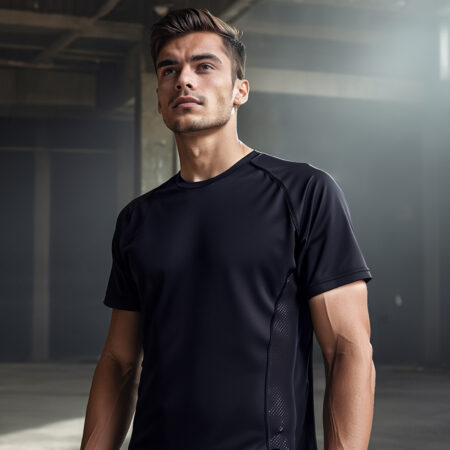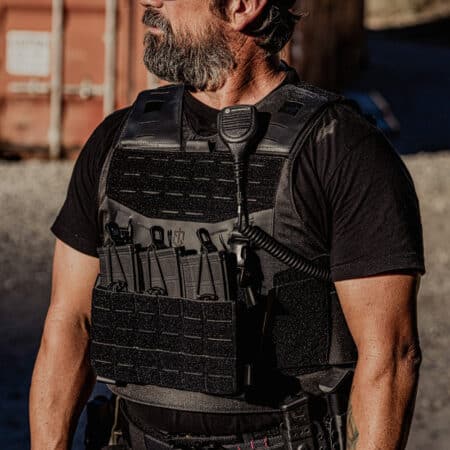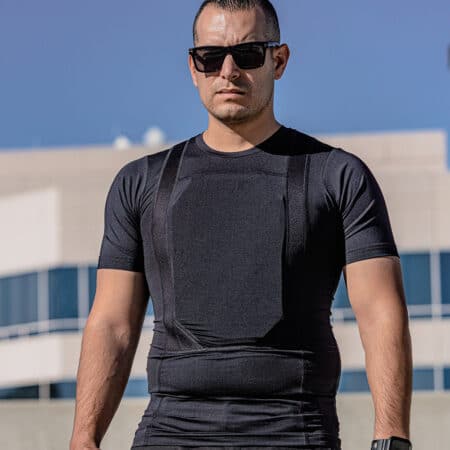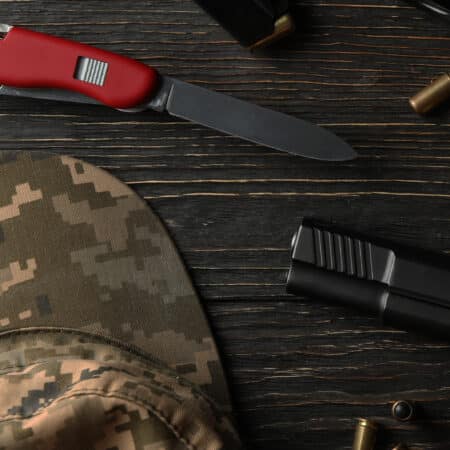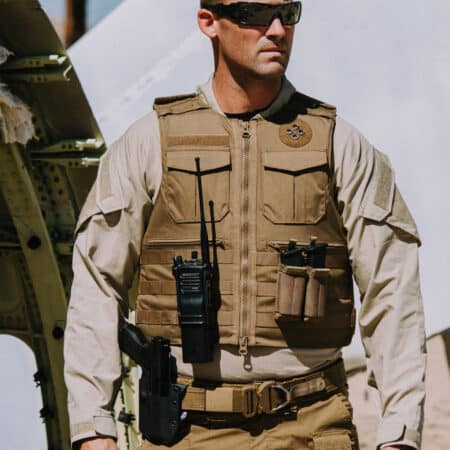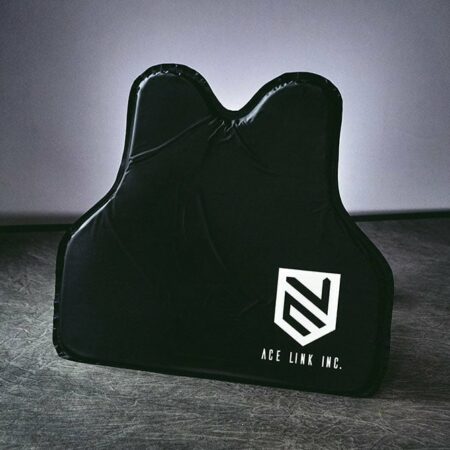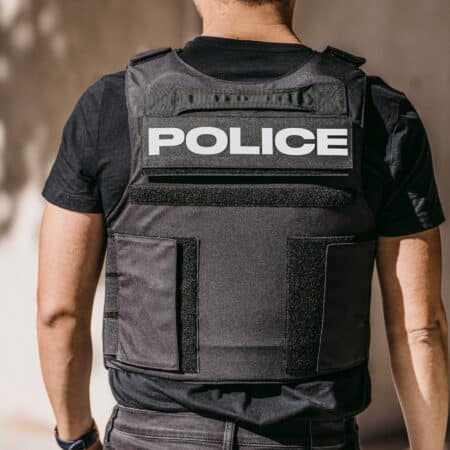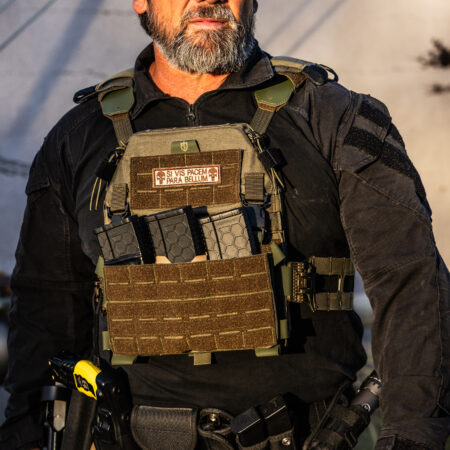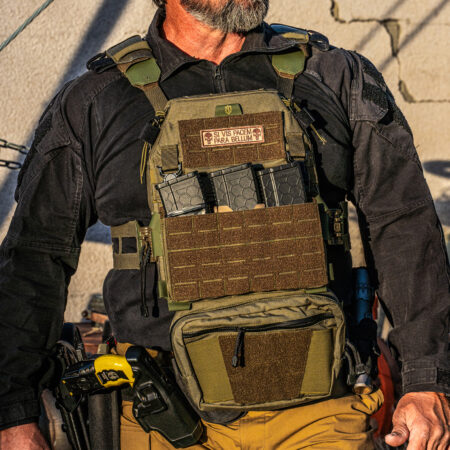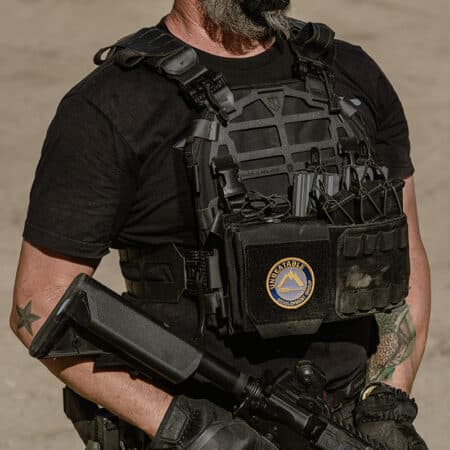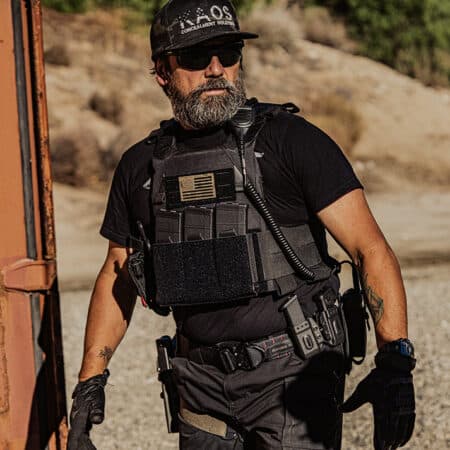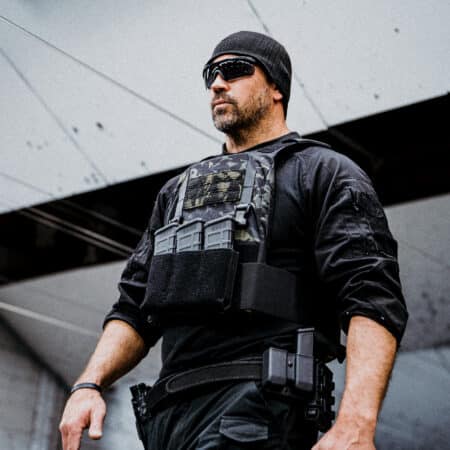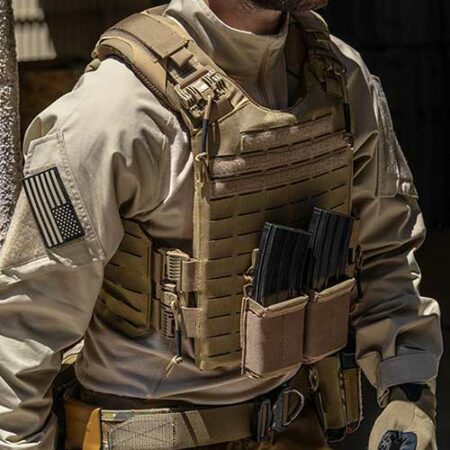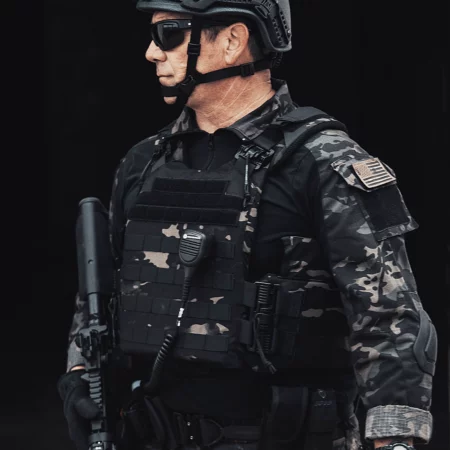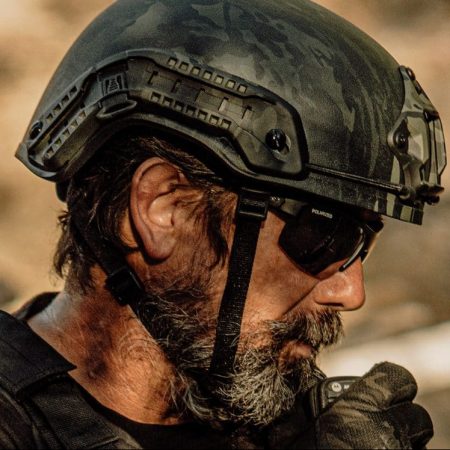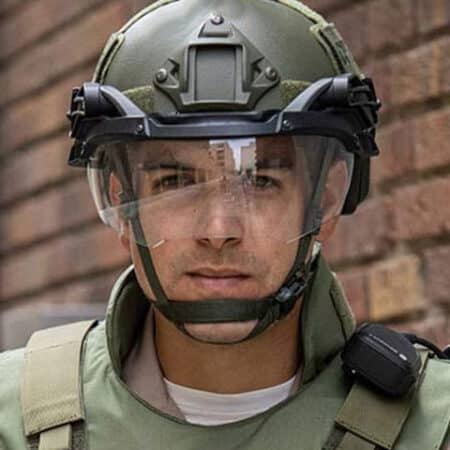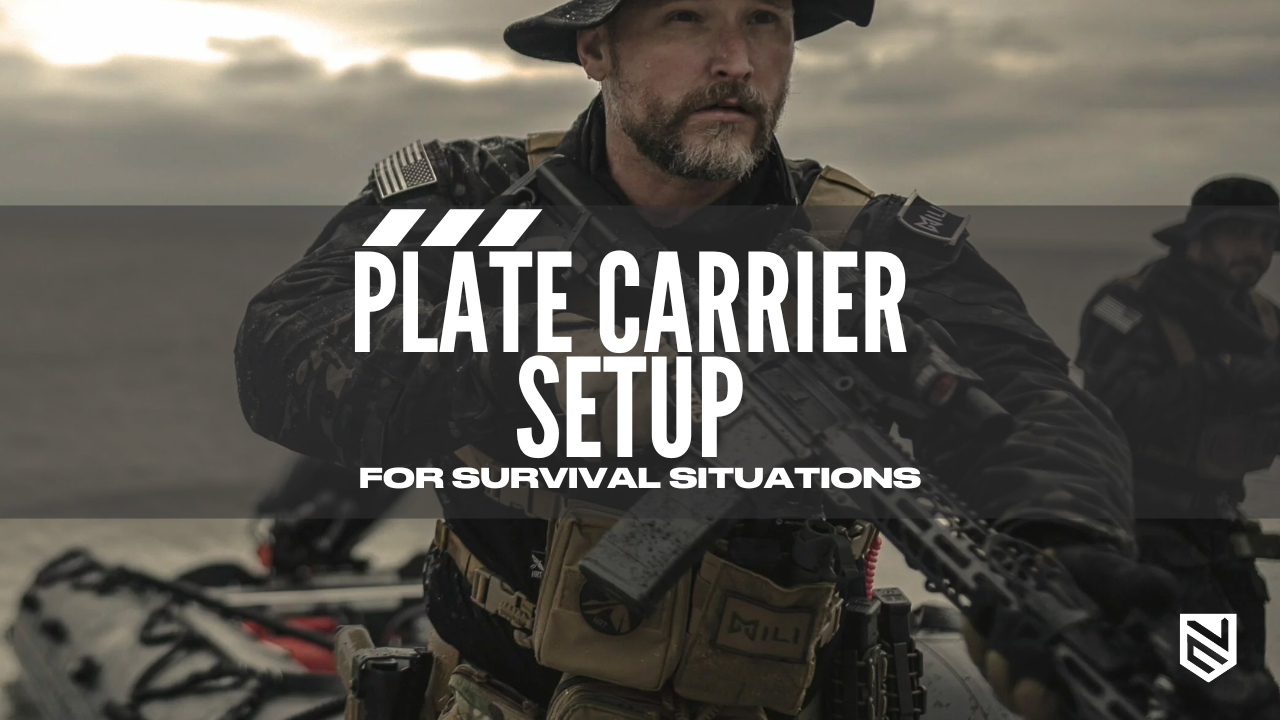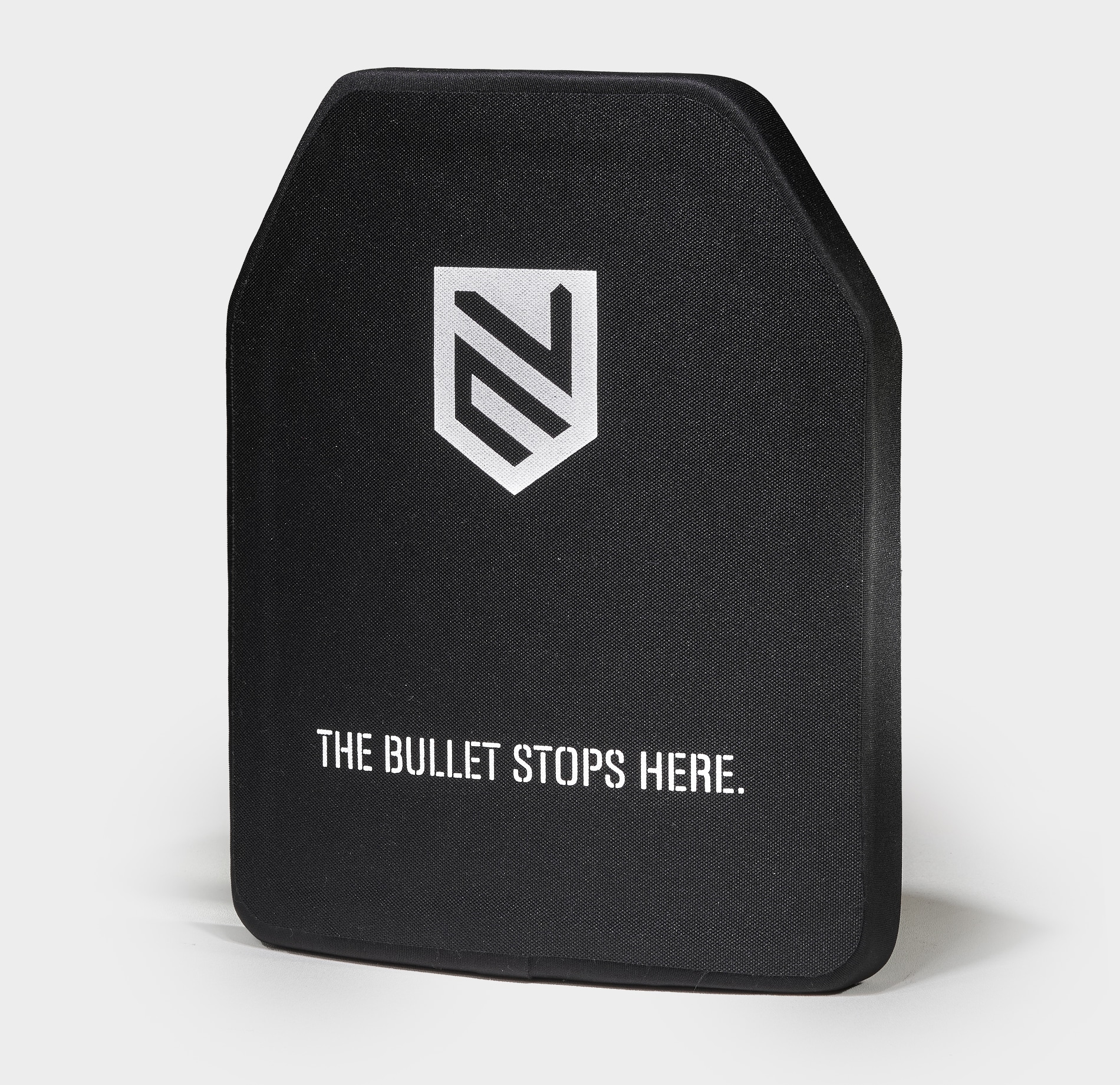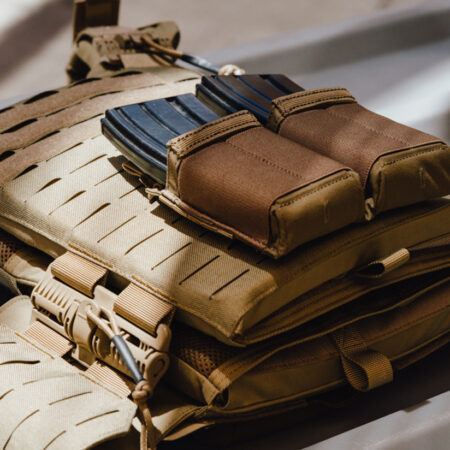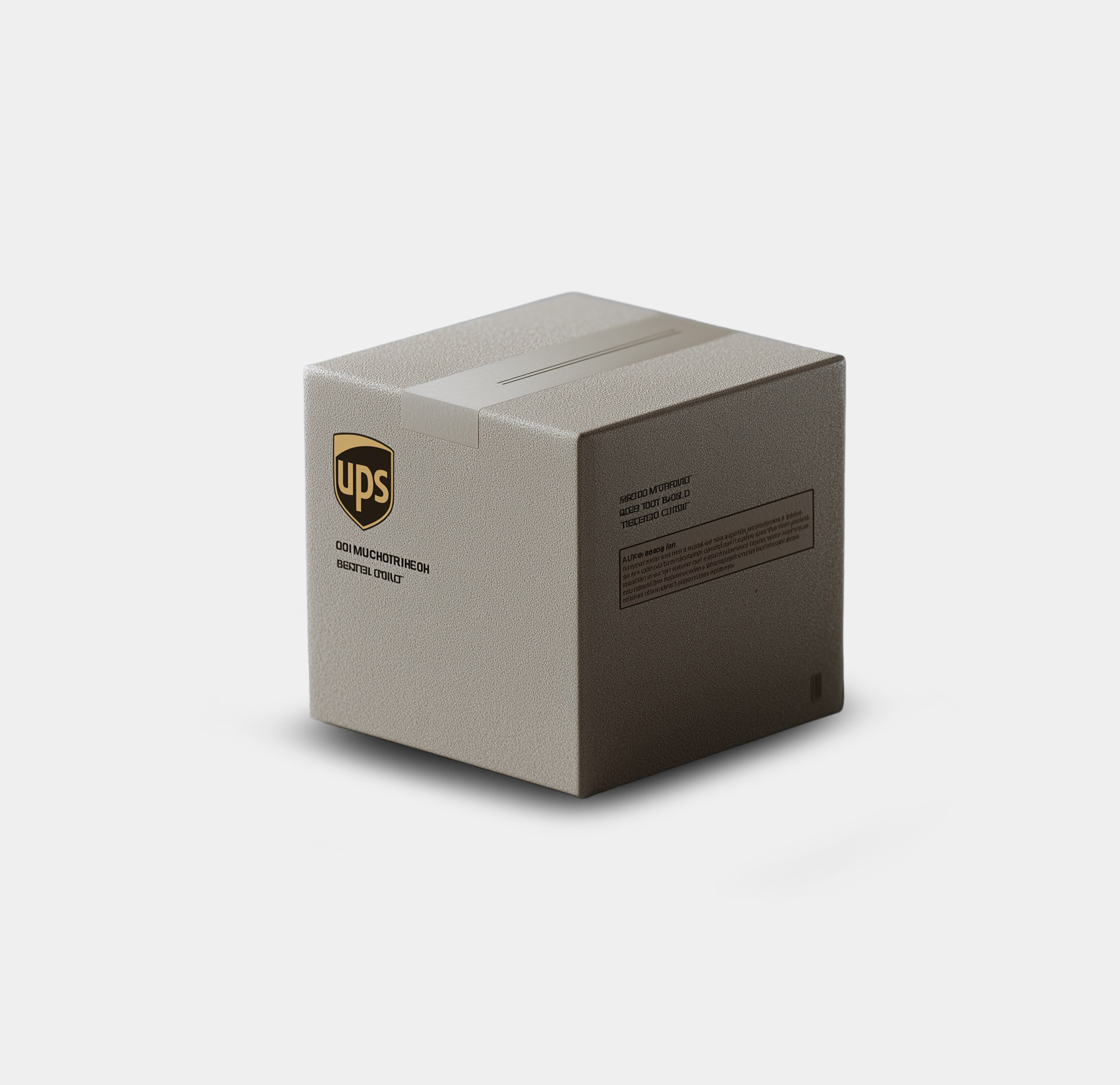Firstly, it is important to understand the role a plate carrier will play in your survival gear. You see, a plate carrier alone can fill the role of a complete survival loadout. It is supposed to complement it. Ideally, it should have all the gear that will keep you alive and active until you can get to your full survival loadout. More importantly, it should have the gear that you may need for personal defense, navigation, and communication during a survival situation.
So, the question is, do you really need a plate carrier for survival? Well, how prepared do you want to be? Though a plate carrier may not be at the core of a survival loadout, it is very important, in my opinion. Especially when you consider that survival situations can lead to chaos, and the ability to protect yourself from looters, criminals, and invaders is essential.
When to consider a plate carrier for survival:
Though not strictly “necessary” for all survival situations, a plate carrier can be a valuable addition to a survival kit, especially if you anticipate potential threats from firearms or other ballistic threats. Additionally, After disasters like hurricanes, earthquakes, or power grid failures, you may experience lower law enforcement presence, increasing the risk of looting and violent encounters. Moreover, if such situations persist, it can lead to the complete breakdown of law and order, and in such situations, considering how armed American civilians are, ballistic protection can be as important as food and water.
Basic Considerations for a Survival Plate Carrier Setup
A Survival Plate carrier setup needs to strike a balance between comfort and load-bearing capabilities. You want a plate carrier that is easy to wear for long periods of time and can carry a decent amount of gear.
Armor Plates: Protection vs. Weight
Your choice of armor plates will determine your level of protection and mobility. Level IV armor plates offer the highest level of protection, but they are also the heaviest. On the other hand, for survival, lightweight polyethylene or composite plates are ideal, as they provide good protection without excessive weight.
Ideally, you should have multiple armor plates. If the situation calls for it, for instance, if a full-scale war or conflict breaks out, you can use your level IV plates, otherwise, for a less intense survival situation, you can rely on lighter level III or level III+ PE plates.
Product Comparision
Durability & Weather Resistance
Next up, your survival plate carrier needs to be durable. You need a carrier that can withstand a fair amount of wear and tear and stand up to different weather conditions, allowing you to survive and stay protected in a wide range of environments.
Choose 500D or 1000D Cordura fabric for durability, and ensure that your plate carrier and armor plates are water-resistant. Additionally, choose plates that have a spall-resistant coating, as spalling can destroy a carrier after it is shot at, and it is very dangerous for the wearer as well.
Adaptability:
One of the most essential features of a survival plate carrier is adaptability. The specifics of a survival situation can vary drastically from one case to another. So, you should preferably choose a modular and customizable plate carrier, which can adapt to any situation and help you stay safe.
The Hybrid tactical vest from Ace Link armor is among the most versatile and adaptable plate carrier systems on the market. You can use it as both a Concealable and Overt vest with soft armor panels, giving you inconspicuous protection if required. Additionally, you can pair it with our ICW armor plates to offer Level IV Ballistic protection against rifle and AP rounds as well. It is compatible with a wide range of gear and allows excellent customization for different survival situations as well.
Product Comparison
Loadout Essentials for a Survival Plate Carrier Setup:
Now, let’s get to the most important part of this article. What gear should you mount on your plate carrier for maximum effectiveness in a survival situation? Well, the ideal survival plate carrier setup can change from one situation to the other, however, here are some essential pieces of kit that every survival plate carrier needs to have.
Ammunition pouches:
Remember, the main purpose of your plate carrier is to improve your combat effectiveness in a survival situation, So you need to have some extra ammo for your primary and secondary firearm on it.
For a versatile setup, you can use a placard system with different pouches customized for different weapons.
Individual First Aid Kit:
Though you will probably have a bigger first aid kit inside your bug-out bag, you need to keep a small, individual first aid kit on your person as well. A simple IFAK with trauma bandages, hemostatic gauze, antibiotics, painkillers, chest seals, nitrile gloves, trauma shears, and a nasopharyngeal airway can be very helpful in an emergency situation when you can’t get to your complete first aid kit.
Make sure to include a tourniquet in your IFAK as well, and mount it externally on your carrier so that you can quickly access in an emergency.
A Small Survival Kit:
While a larger survival kit may be stored in your bug-out bag, having a compact kit attached to your plate carrier ensures you have critical supplies within reach at all times. A small survival kit should include a Ferro rod or waterproof matches for fire-starting, a compact flashlight or headlamp, a multi-tool for various tasks, a signal whistle, and a small compass for navigation. Adding a few energy bars or ration packs can provide an emergency calorie boost. Paracord, duct tape, and a small water filtration straw can also be invaluable in survival situations.
Mount this kit in a secure yet accessible pouch on your carrier, ensuring you can reach it without having to remove your gear. Also, this kit will probably get a little bulky,; youcan mount it off to one side, on your back to make sure that it doesn’t get in your way when you are moving about,
Radio pouch for communication gear:
Reliable communication gear is crucial in a survival situation, allowing you to coordinate with others, call for help, or stay informed about potential threats. A compact two-way radio or tactical comms system should be securely mounted on your plate carrier for quick access. A dedicated radio pouch on the side or front of the carrier ensures stability while keeping the device within easy reach. For hands-free use, consider routing a push-to-talk (PTT) button and earpiece through your shoulder straps. Backup options like a signal mirror or whistle can also be attached for emergency signaling if electronic comms fail.
Hydration system
Staying hydrated is essential in any survival situation, especially during high-stress or physically demanding scenarios. A hydration system, such as a bladder with a drinking tube, should be securely mounted on the back of your plate carrier to ensure easy access without adding bulk to the front. Routing the tube over your shoulder and securing it with straps allows for hands-free drinking on the move.
Conclusion:
In a survival situation, every piece of gear on your plate carrier should serve a purpose—keeping you protected, prepared, and self-sufficient. From ballistic protection and ammunition to essential medical supplies, communication tools, and hydration, a well-thought-out plate carrier setup can significantly enhance your chances of survival.
Though every scenario may not require one, having a plate carrier as part of your survival loadout provides an added layer of defense and readiness in unpredictable situations. Ultimately, the goal is to strike a balance between protection, mobility, and practicality, ensuring you stay prepared for whatever challenges may come your way.


